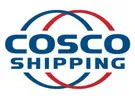 OOIL fleet boosts Cosco’s volumes and revenue, but rates were stagnant and high finance costs push profit lower. Cosco Shipping Holdings reported its first year of results, which include the addition of results from Orient Overseas (International) Limited (OOIL).
OOIL fleet boosts Cosco’s volumes and revenue, but rates were stagnant and high finance costs push profit lower. Cosco Shipping Holdings reported its first year of results, which include the addition of results from Orient Overseas (International) Limited (OOIL).
The combined company reported strong revenue growth thanks to the addition of the 100-plus OOIL ships to Cosco’s fleet. But tougher comparables and higher finance costs brought net income down from a year ago.
Already one of China’s largest ocean freight and terminal operators, Cosco became the third largest container ship owner in the world with last year’s closing of the $6.3 billion OOIL takeover. The combined fleet now totals 477 ships with 2.76 million twenty-foot equivalent (TEUs) in capacity.
Cosco saw 2018 revenue rise 33 percent to the U.S. equivalent of $17.86 billion. Excluding the results from OOIL, Cosco would have seen revenue rise 7 percent to $14.39 billion.
The company’s container shipping business accounted for $17 billion in revenue, with Cosco’s container line revenue at $13.55 billion while OOIL’s container business brought in $3.47 billion. Average revenue per TEU was flat at $872.
Container shipping costs for Cosco were $15.86 billion for the group. It said shipping costs, which amounted to $728 per TEU last year on a combined basis, were up 2.3 percent from last year, including fuel, and down roughly the same amount excluding fuel costs.
One-time gains from last year, though, made for tougher comparable results, with operating profit down 12 percent for the year. And the company’s finance costs of $593 million were up sharply in the wake of the OOIL takeover with both long- and short-term debt for the company rising to $20.36 billion.
Overall net income was down 53 percent to $182 million.
The combined container lines handled 21.8 million TEUs for the year, a 29 percent increase from a year ago. Cosco Shipping handled 18.4 million, a 9 percent increase from a year ago, with OOIL lines handling 3.4 million TEUs in the five months since Cosco’s takeover.
Cosco also cited its business in developing markets, such as South America and West Africa, along with its intra-regional container service. Cosco said the amount of capacity in developing markets went from 12 percent to 18 percent last year, while the amount of intra-regional service went from 30 percent of capacity to 37 percent last year.
OOIL entered a vessel slot sharing agreement with Cosco for ships serving developing markets as the two fully committed to and actively implemented the Belt and Road Initiative.
As have other companies in ocean freight, Cosco trumpeted its moves in “digitalized shipping to improve service standards and customer experience.”
Source: Freightwaves.com
